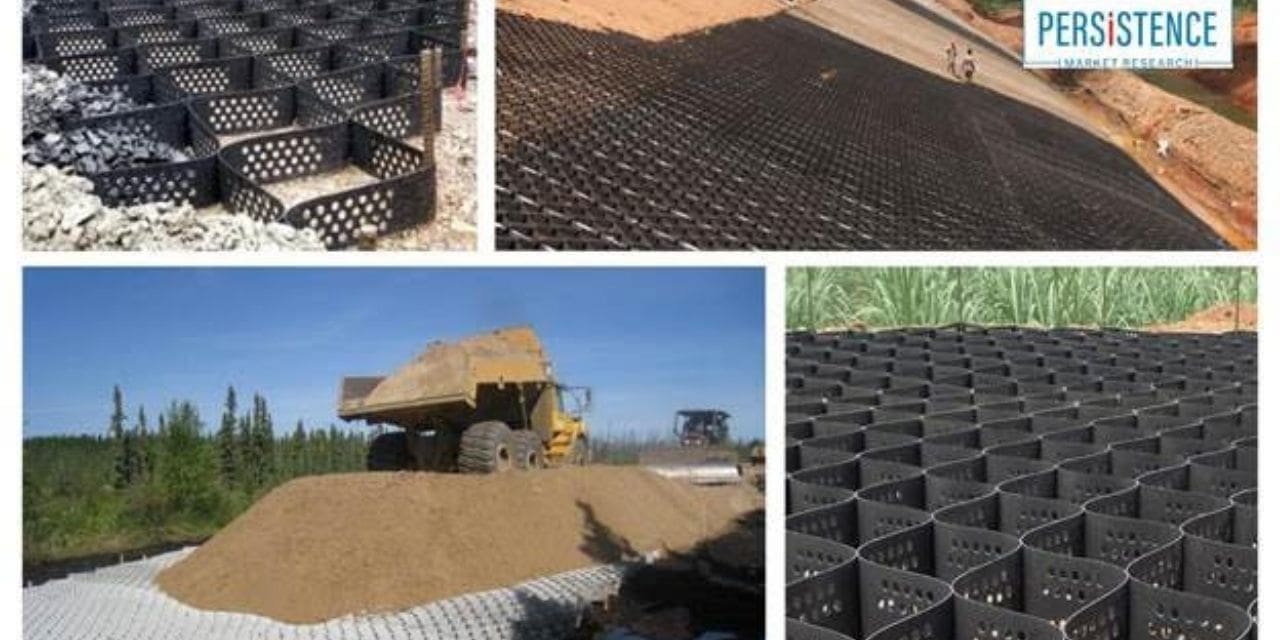The Potential of Geocells: Advancements, Applications, and Environmental Impact of Cellular Confinement Systems
Cellular confinement systems, commonly referred to as geocells, have emerged as versatile tools in civil engineering, geotechnical applications, and environmental protection. This paper delves into the advancements in geocell technology, explores its diverse applications, and examines its environmental impact. Geocells offers innovative solutions for soil stabilization, erosion control, slope protection, and various infrastructure projects. Furthermore, their sustainable attributes contribute to minimizing environmental degradation, making them indispensable in modern engineering practices.
Cellular confinement systems, popularly known as geocells, represent a significant innovation in the realm of geotechnical engineering. Initially introduced in the late 1970s, geocells have undergone remarkable advancements, evolving into highly efficient and adaptable solutions for a wide array of challenges in civil engineering and environmental protection. This paper aims to provide an in-depth exploration of the advancements, applications, and environmental impact of geocells, shedding light on their transformative potential in modern infrastructure development and sustainable practices.
Market Overview: Geocells Market
Geocells, also known as cellular confinement systems, are three-dimensional honeycomb-like structures made from various materials such as high-density polyethylene (HDPE), polypropylene (PP), and polyester. These systems find extensive applications in soil stabilization, erosion control, slope protection, retaining wall construction, and road infrastructure development. The global geocells market demonstrates robust growth, fueled by increasing infrastructure development activities, urbanization, and environmental concerns. According to Persistence Market Research, the global geocells market is forecasted to grow at a 6.1% CAGR from 2023 to 2033. By 2023, it’s estimated to reach a valuation of US$142.2 million. With increasing demand, the market is anticipated to hit US$257.0 million by 2033.
Advancements in Geocell Technology:
Geocell technology has witnessed substantial advancements over the years, driven by research, innovation, and the demand for more effective solutions in soil stabilization, erosion control, and infrastructure development. Key advancements include:
Material Innovation: Traditional geocells were primarily constructed using high-density polyethylene (HDPE). However, advancements have led to the development of various materials such as polyester, polypropylene, and recycled plastics, enhancing durability, flexibility, and environmental sustainability.
Structural Design Optimization: Modern geocells feature advanced design elements, including varied cell shapes, depths, and wall thicknesses, optimized to withstand different soil conditions, loadings, and environmental factors. Computer-aided design (CAD) software facilitates precise customization according to project requirements.
Connection Mechanisms: Innovations in connection mechanisms, such as interlocking joints and snap-fit designs, enhance the ease of installation, structural integrity, and overall performance of geocell systems. These advancements ensure quick deployment and minimize labor requirements, contributing to cost-effectiveness.
Integration of Geosynthetics: Integration of geosynthetic materials, such as geotextiles and geogrids, with geocells further enhances their reinforcement capabilities, erosion resistance, and hydraulic performance. Composite systems exhibit synergistic effects, offering superior performance compared to individual components.
Applications of Geocells:
Geocells find diverse applications across various sectors, revolutionizing traditional approaches and offering innovative solutions to complex challenges. Some prominent applications include:
Soil Stabilization: Geocells are extensively used for soil reinforcement in road construction, railway embankments, and retaining wall structures. By confining and interlocking soil particles, geocells increase shear strength, reduce lateral displacement, and enhance load-bearing capacity, thereby mitigating settlement and deformation.
Erosion Control: Geocells serve as effective erosion control measures in slope protection, riverbank stabilization, and shoreline protection projects. Their cellular structure promotes vegetation growth, stabilizes slopes, and dissipates hydraulic energy, thereby minimizing soil erosion and preserving ecological balance.
Load Support: Geocells provide cost-effective solutions for load support and pavement reinforcement in parking lots, airports, and industrial yards. By distributing loads laterally and reducing vertical stresses, geocell-reinforced structures improve bearing capacity, prevent rutting, and prolong service life.
Vegetated Retaining Walls: Green retaining walls, constructed using geocells filled with topsoil and vegetation, blend aesthetics with functionality. These vegetated walls offer natural habitat restoration, noise reduction, and stormwater management benefits while providing effective soil stabilization and erosion control.
Channel Protection: Geocell revetment systems protect channels, canals, and riverbanks from scouring, erosion, and sedimentation. They stabilize channel beds, control flow velocities, and promote aquatic habitat diversity, thus ensuring the long-term sustainability of hydraulic structures.
Environmental Impact of Geocells:
The environmental impact of geocells extends beyond their immediate engineering applications, encompassing ecological, social, and economic aspects. Key environmental benefits include:
Sustainable Land Use: Geocells enable the utilization of marginal and unstable land for infrastructure development, reducing the need for land excavation and minimizing ecological disturbance. By enhancing soil stability and erosion control, geocells contribute to sustainable land use practices and habitat preservation.
Carbon Footprint Reduction: Compared to conventional construction methods, geocell systems require fewer natural resources, generate less construction waste, and entail lower energy consumption during installation. Moreover, the use of recycled plastics in geocell manufacturing reduces reliance on virgin materials and helps mitigate greenhouse gas emissions.
Habitat Restoration: Vegetated geocell systems facilitate habitat restoration and biodiversity enhancement in urban and natural environments. By promoting vegetation growth and providing habitat niches, green infrastructure incorporating geocells supports wildlife conservation efforts and enhances urban green spaces.
Stormwater Management: Geocells aid in stormwater infiltration, retention, and filtration, reducing surface runoff, preventing soil erosion, and improving water quality. Permeable geocell pavements and vegetated swales mitigate the impacts of urbanization on hydrological cycles, enhancing ecosystem resilience and mitigating flood risks.
The evolution of geocell technology has revolutionized the field of geotechnical engineering, offering sustainable solutions to a wide range of challenges in infrastructure development and environmental protection. Advancements in material science, structural design, and integration with geosynthetics have expanded the applicability and effectiveness of geocells across diverse sectors. Furthermore, their positive environmental impact, including habitat restoration, carbon footprint reduction, and stormwater management, underscores their significance in promoting sustainable development practices. As the demand for resilient and eco-friendly infrastructure grows, geocells are poised to play a pivotal role in shaping the future of civil engineering and environmental stewardship.

